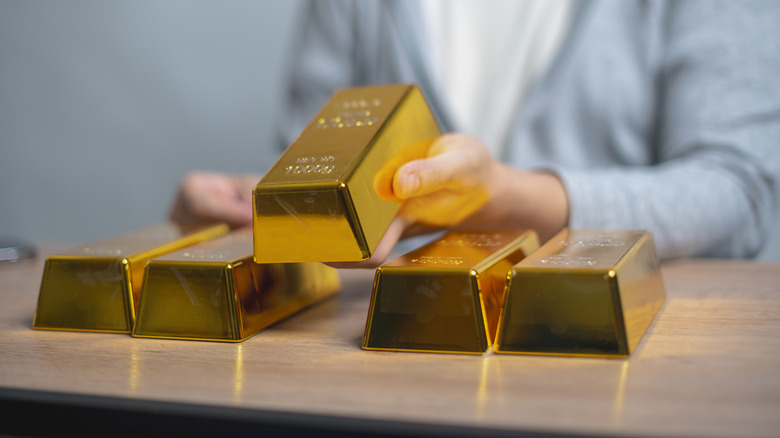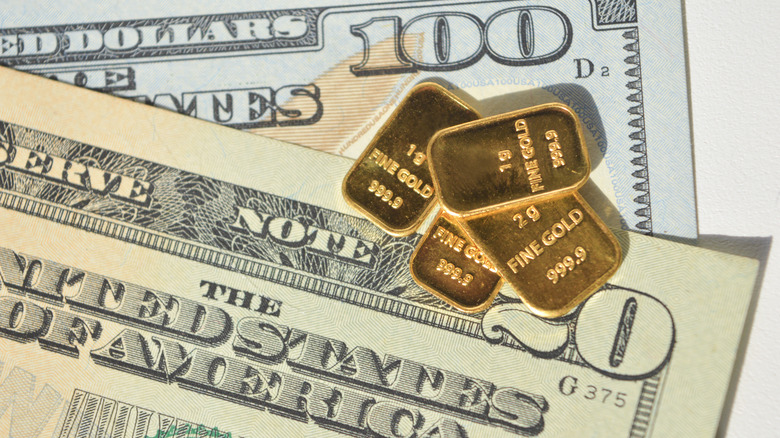Gold Hits Unprecedented Milestone & The Reason May Surprise You
This might be the best time to stumble on an old treasure map that leads to a lost island of X. That's because gold hasn't just gone up, it's the highest it's been in the last 10 years. Since 2015, gold prices have jumped over 150%. Back then, an ounce of gold cost about $1,184.25 but in 2025, that number hit $3,023.42. Folks who've kept gold as an investment would be proud of their decisions because it has been smooth sailing and 2024 saw a significant rise in price.
At the beginning of January 2024, gold was priced at around $2,066.24 per ounce. By December 31, 2024, the price had climbed to approximately $2,606.72 per ounce. This increase of about $540.48 per ounce represents a 26.2% rise. In 2025, the upward trend has continued. Starting at $2,624.49 per ounce on January 1, 2025, gold prices reached $3,033.80 per ounce by March 24, 2025. A rise of about $409.31 per ounce.
Gold prices have been growing, making it the most expensive compared to other metals like silver, platinum, and palladium. Silver is currently priced at $33.45 per ounce, platinum at $997.90, and palladium slightly higher at $999.80. But why is gold at the top? Understanding this can help investors make more informed decisions and possibly benefit from these trends.
What is behind the rise in gold prices?
Whenever more people want something, the price usually goes up — this is true for gold as well. Recently, global tensions and big political moves have made gold even more popular. For example, when the Trump administration set big tariffs (extra costs) on items coming from China, Canada, and Mexico, it shook things up. These tariffs — 25% on goods from Canada and Mexico and 20% on Chinese products — had everyone worried about a possible big trade fight.
This fear led more investors to buy gold. It's seen as a safe thing to own because it doesn't depend on any particular country's economy or currency for its value. Unlike stocks or bonds, which can lose value if a country's economy struggles, gold is a physical commodity that retains value. Thus, when the global economic outlook is shaky, people tend to buy more gold, driving up its price.
This year, the price of gold has been rising, partly because central banks, especially China's, were buying a lot of it last year. They do this to mix up their investments and reduce the risks that come with currency fluctuations. The U.S alone has more than 8,000 tons in gold reserves, the largest worldwide and if it continues, it will keep supporting gold prices.
History, yet again
As gold prices climb, big players like the S&P 500, Nasdaq Composite, and Dow Jones Industrial Average (DJIA) have all dipped. On January 1, 2025, DJIA closed at approximately 44,424.25, the S&P 500 closed at approximately 6,101.24 and Nasdaq Composite at approximately 19,954.30. On March 21st, 2025, DJIA closed at 41,985.35, S&P 500 at 5,667.56, and Nasdaq Composite closed at 17,784.05. It's a familiar pattern; when the stock market struggles, gold usually starts to shine.
In the financial crisis of 2008, global stock markets took a major hit, stocks plummeted, but gold became the star investment. Its price shot up from around $800 per ounce in 2007 to over $1,000 by March 2008. History repeated itself with the COVID-19 pandemic. Stocks tumbled again as fears of a global economic crash spread. But gold? It hit $2,000 per ounce in August 2020 for the first time. This time is no different.
While all of this might want to make you start investing in gold, we don't recommend keeping bars or coins in a safe. There are exchange-traded funds (ETFs), like SPDR Gold Shares, which let you get in on the gold action without having to worry about where to keep it safe. These ETFs track the price of gold and are a hassle-free way to invest.


